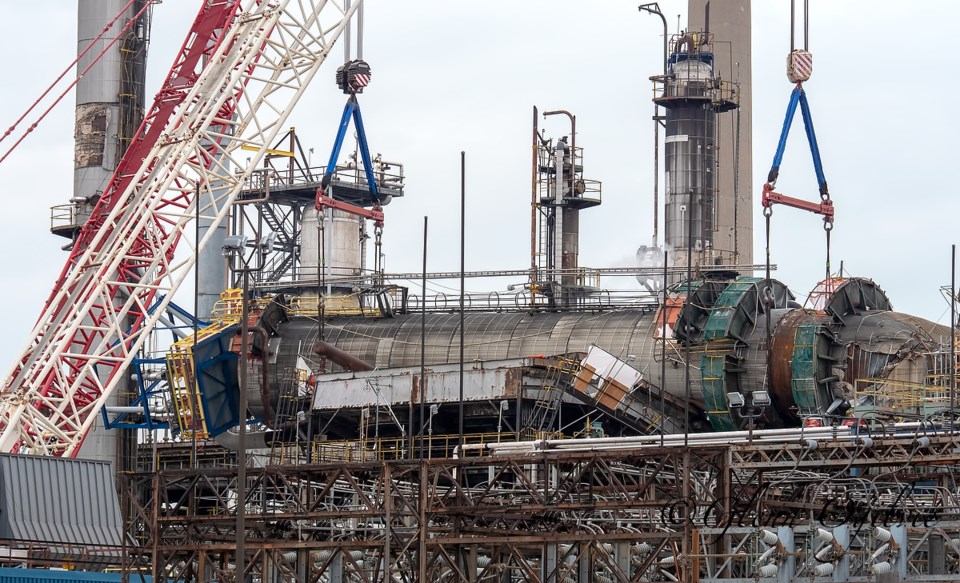Troy Shantz
A fatal design flaw combined with a volatile byproduct combined to cause an April 2 tower collapse at Imperial Oil, the company said.
Modifications made to the tower in 2011 allowed an unexpected accumulation of the byproduct - known as pyrophorics - to heat up and melt portions of the 15-story structure, said refinery manager Rohan Davis.
“It’s a design change that was on this unit, and the risks around pyrophorics were not adequately considered when the design change was made,” Davis said last week following a lengthy internal investigation.
“I think we recognize as a company that we want to do better, and there’s a lot to learn from this incident.”
No one was injured and no uncontrolled release of pollutants was reported after the 50-year-old tower collapsed within the plant on the west side of South Vidal Street.
The tower, normally used for processing types of aviation fuel, was empty and scheduled for inspection that night. But workers unknowingly triggered a chain reaction when the unit was opened, Davis explained.
When exposed to air, the residual pyrophorics heated up and produced several hotspots in the structure, weakening it to the point of collapse. It fell around 8:15 p.m., triggering a combined response from Imperial Oil and city first responders who sealed of the area.
“The time frame in which this occurred is very short… it was a shorter time frame than I think we’ve seen in industry before,” said Davis, noting workers cleared the area before the tower fell.
The investigation determined Imperial staff and contractors followed proper procedures leading up to the incident, Davis said.
“The team was able to verify with absolute certainty that the cause was not related to the age, inspection or maintenance of the tower,” said Davis in a release.
Imperial Oil shared its findings with city officials last week. Mayor Mike Bradley said he’s satisfied with the results.
Ministry of the Environment, Conservation and Parks, The Ministry of Labour and the Technical Standards and Safety Authority also investigated.
Pyrophorics are a “known hazard” in the industry and a regular byproduct in processes within refineries and chemical plants, Davis said.
Procedures to deal with pyrophorics were re-analyzed but no significant changes have been recommended, Davis added.
“We manage pyrophorics, just like the rest of industry, in a very clear, structured way.”
Imperial has inspected similar towers in Sarnia and sites around the world in search of the same design flaw and so far none have been found, he said.
The findings have been shared with local industry in hopes of preventing a recurrence.
“This is not an event that’s happened within our company before. We took a lot of time to make sure we clearly understood the cause of the incident,” he said.
Two cranes stabilized the fallen tower for several weeks. On June 2 it was lowered and will be dismantled on site, the company said.
